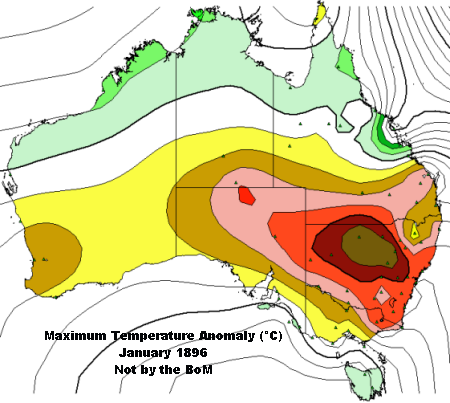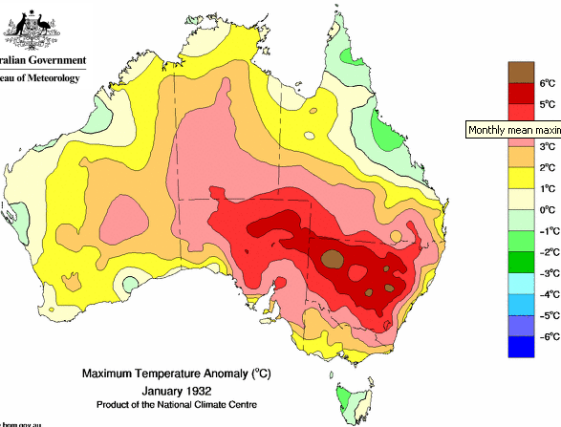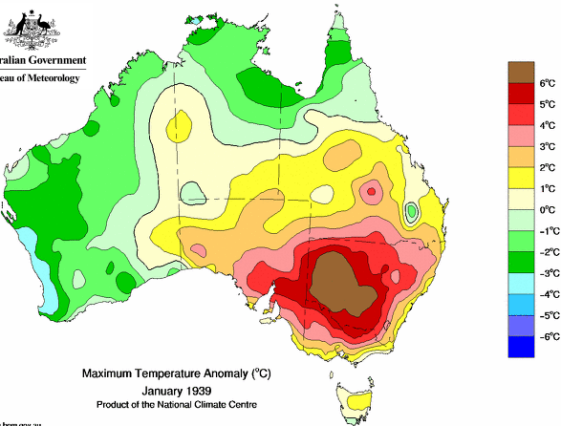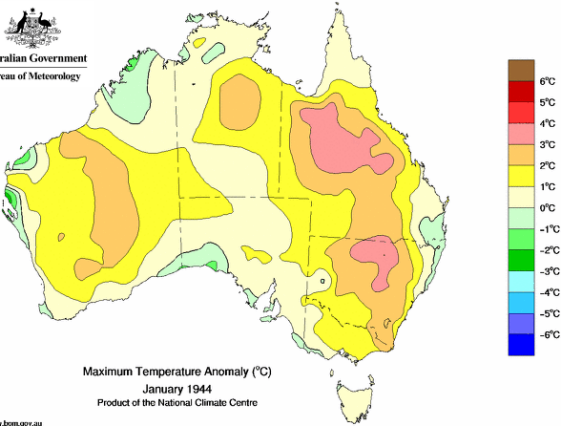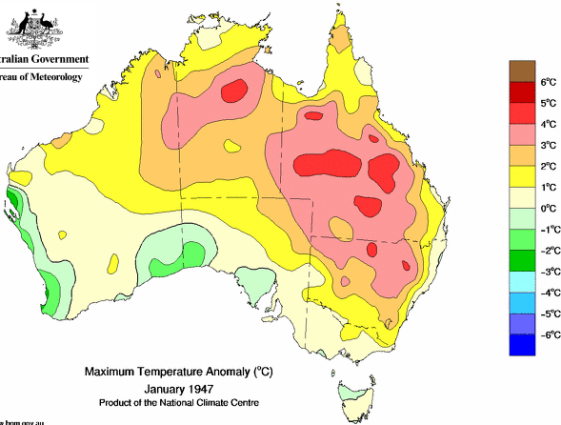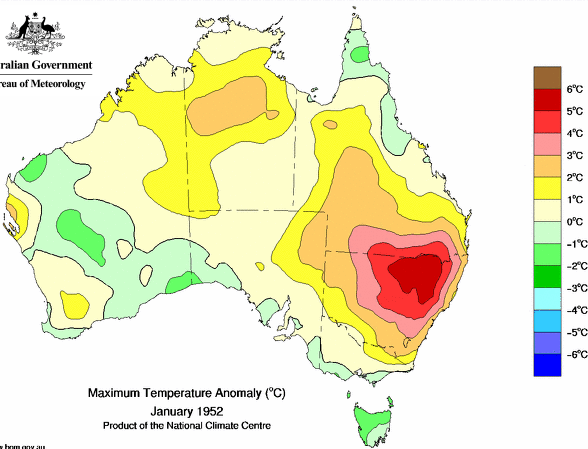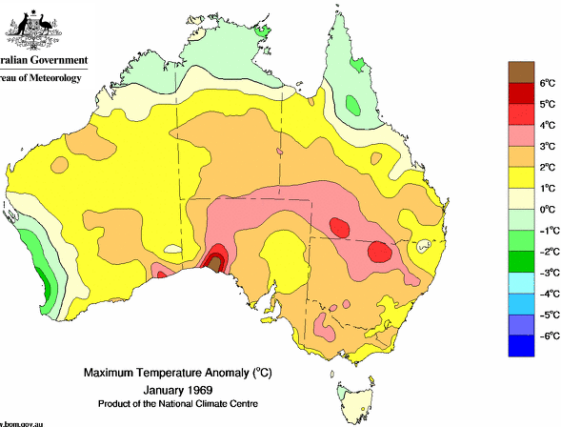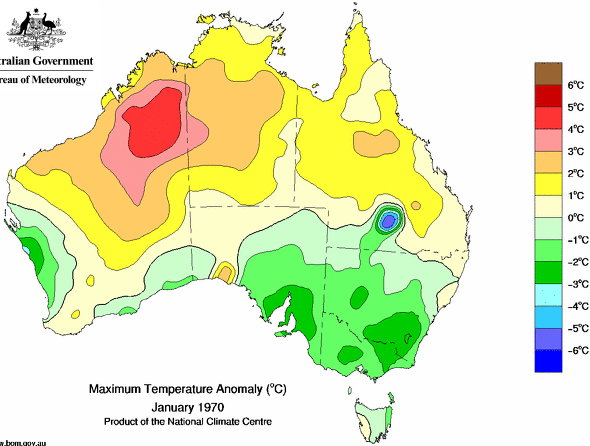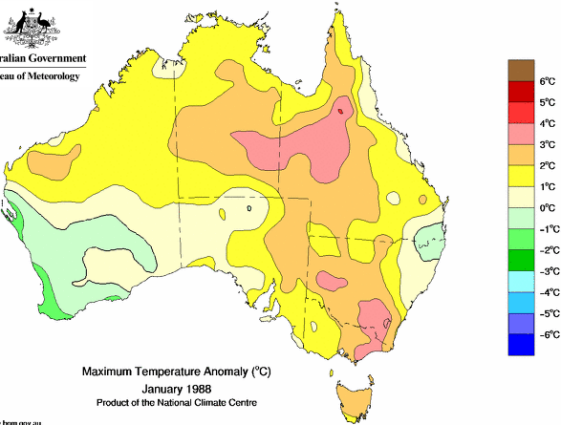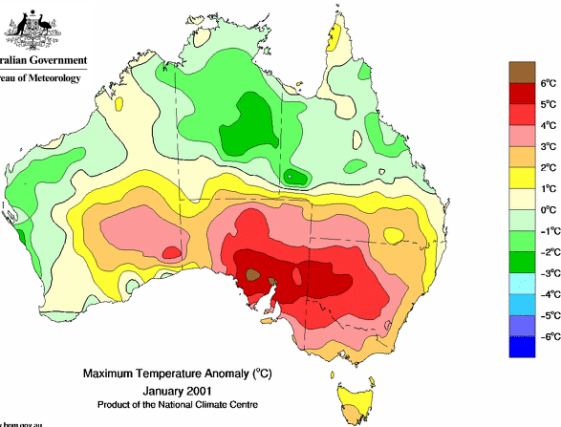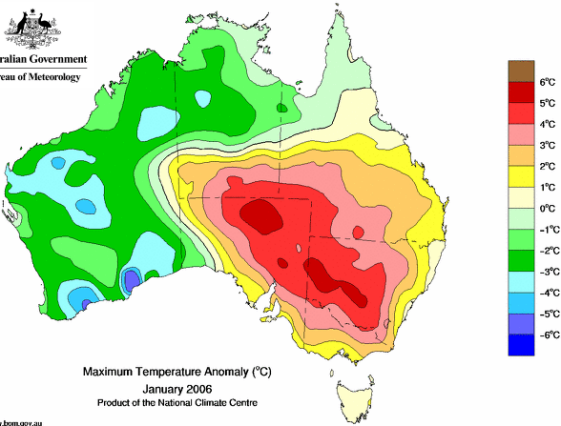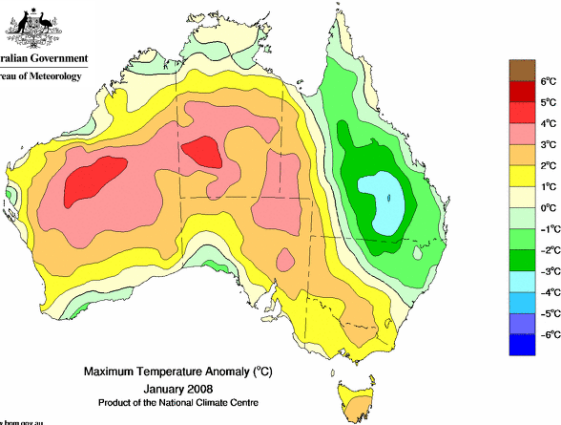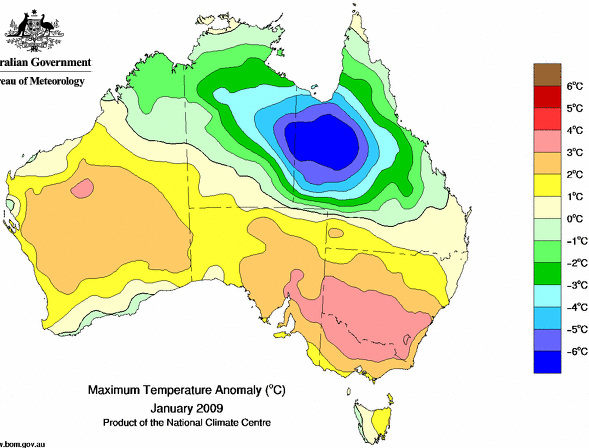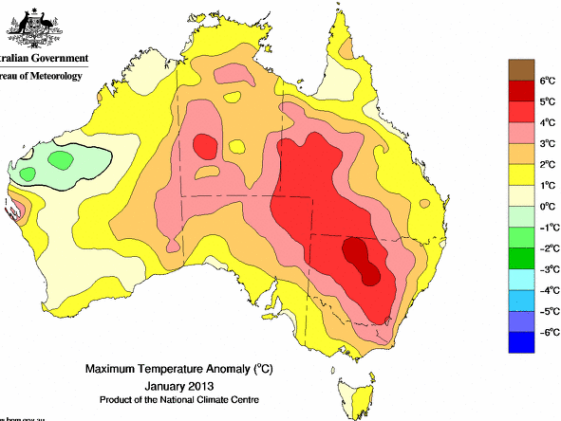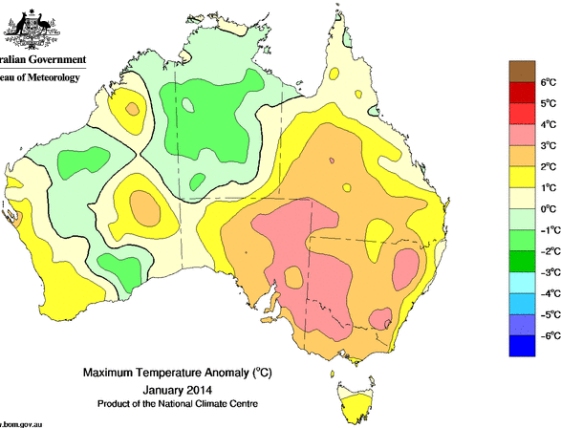1896
turned out similar to 1939 but with larger +3° area - Standout
difference with all other maps is the persistence of the +4° anomaly to
the NSW coast - which is never seen in subsequent maps.
|
Compares well with the much spruiked 2013 - which has no +6 anomalies.
|
Largest area of +6°C anomalies by a country mile - Jan 1939 saw our
greatest loss of life in bushfires - cool anomaly in far north and west.
|
|
|
|
|
Unusual
pattern cool in SE. Note the error in BoM contouring near Charleville
indicated by the repetition of the buff contour zone between pale blue
and dark green.
|
|
|
|
|
Major bushfires in Feb - you never hear about that colossal cool anomaly in the north.
|
How many trees have been cut down for the news stories beating up 2013
as our hottest January EVAH. Note zero area of +6° anomaly.
|
|
